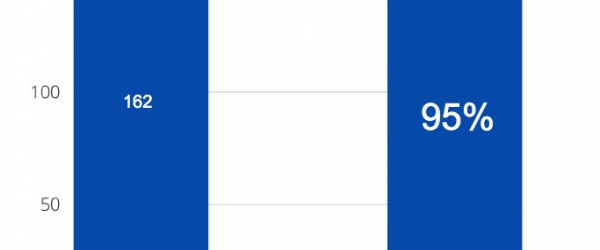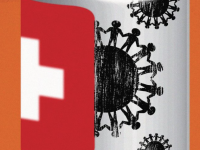The important distinction between Relative Risk Reduction and Absolute Risk Reduction
You will no doubt have read headlines about how the Pfizer vaccine is ‘95% effective’.
Many of us see the words ‘95% effective’ and think this means that, for every 100 people vaccinated, 95 of them will be protected from Covid-19 as a result of the vaccine. But that is not what ‘95% effective’ means here.
It’s critical to understand that the 95% figure being quoted is a Relative Risk Reduction, not an Absolute Risk Reduction.
When we talk about Relative Risk, we’re talking about the small group of people in the vaccine trial who actually developed symptomatic Covid-19. We’re talking about 170 people out of the 44,000 that were in the Pfizer vaccine trial.
This figure excludes the vast majority of people who took part in the trial, who didn’t develop Covid. This in itself tells us something significant about the prevalence of symptomatic disease.

It’s also important to recognise that the way ’cases’ were defined in the trial (symptomatic AND a positive test) is not the same way that ’cases’ are defined when we see the daily or cumulative case figures (JUST a positive test). This has led to further confusion and misunderstanding about how the vaccines work in practice.
Anyway, what we really want to know is this: how effective was the vaccine at preventing symptomatic Covid-19 for the whole group? What is its Absolute Risk Reduction?
The original Pfizer vaccine trial had 44,000 volunteers aged from 18-55.
Half of these (22,000) were given the vaccine and half a placebo.
Remember that people had to be symptomatic to be counted as a case, as they didn’t routinely test participants.
162 cases were in the placebo group. That’s 162 cases in 22,000 people: 0.74%. (162 / 22,000) x 100 = 0.74%.
8 cases were in the vaccine group. That’s 8 cases in 22,000 people: 0.04%. (8 / 22,000) x 100 = 0.04%.
What’s the difference between the two percentages? 0.74% – 0.04% = 0.7%
So the Absolute Risk Reduction is 0.7%. That’s the payback for taking this vaccine, according to the Pfizer trial data.

Absolute Risk Reduction for trial participants According to the above figures, unvaccinated people have a 0.74% chance of getting symptomatic Covid-19. You can shave 0.7% off that figure by getting vaccinated, because vaccinated people have a 0.04% chance of getting symptomatic Covid-19.
But you can look at it a different way: unvaccinated people therefore have a 99.26% chance of not getting symptomatic Covid-19. Vaccinated people have a 99.96% chance of not getting symptomatic Covid-19.
Here’s how you reach the Relative Risk Reduction figure of 95%:
There were 8 cases in the vaccinated group. There were 162 cases in the placebo group. 8 is 5% of 162. So you have a 95% drop in cases in the vaccinated group versus the unvaccinated group. Or, in other words, the vaccine is ‘95% effective’.

Relative Risk Reduction for trial participants You can see why pharmaceutical companies like to use Relative Risk Reduction when talking about their products.
And why, when they say that their vaccine is ‘100% effective’ in children, we need to investigate that.
Here are the relevant numbers for the Pfizer trial in 12-15-year-olds:
2,260 children in the trial.
18 cases out of 1,129 in the placebo group.
0 cases out of 1,131 in the vaccinated group.
100% effective, right? Well, only if you ignore all those that had natural protection.
Here’s your Absolute Risk Reduction:

18 cases were in the placebo group. That’s 18 cases in 1,129 children: 1.59%. (18 / 1,129) x 100 = 1.59%.
0 cases were in the vaccine group. That’s 0 cases in 1,131: 0%. (0 / 1,131) x 100 = 0%.
What’s the difference between the two percentages? 1.59% – 0% = 1.59%
That’s your Absolute Risk Reduction for children: 1.59%.
We think it’s safer to wait for better results before giving children the Covid-19 vaccine.
References and further reading:
https://blogs.bmj.com/bmj/2020/11/26/peter-doshi-pfizer-and-modernas-95-effective-vaccines-lets-be-cautious-and-first-see-the-full-data/ https://childrenshealthdefense.org/defender/vaccine-makers-claim-covid-shots-95-percent-effective-what-does-that-mean/ https://www.bmj.com/content/371/bmj.m4037 https://blogs.bmj.com/bmj/2021/01/04/peter-doshi-pfizer-and-modernas-95-effective-vaccines-we-need-more-details-and-the-raw-data/ https://www.statnews.com/2021/05/10/fda-authorizes-pfizers-covid-19-vaccine-for-use-in-adolescents/ https://www.mdpi.com/1648-9144/57/3/199





